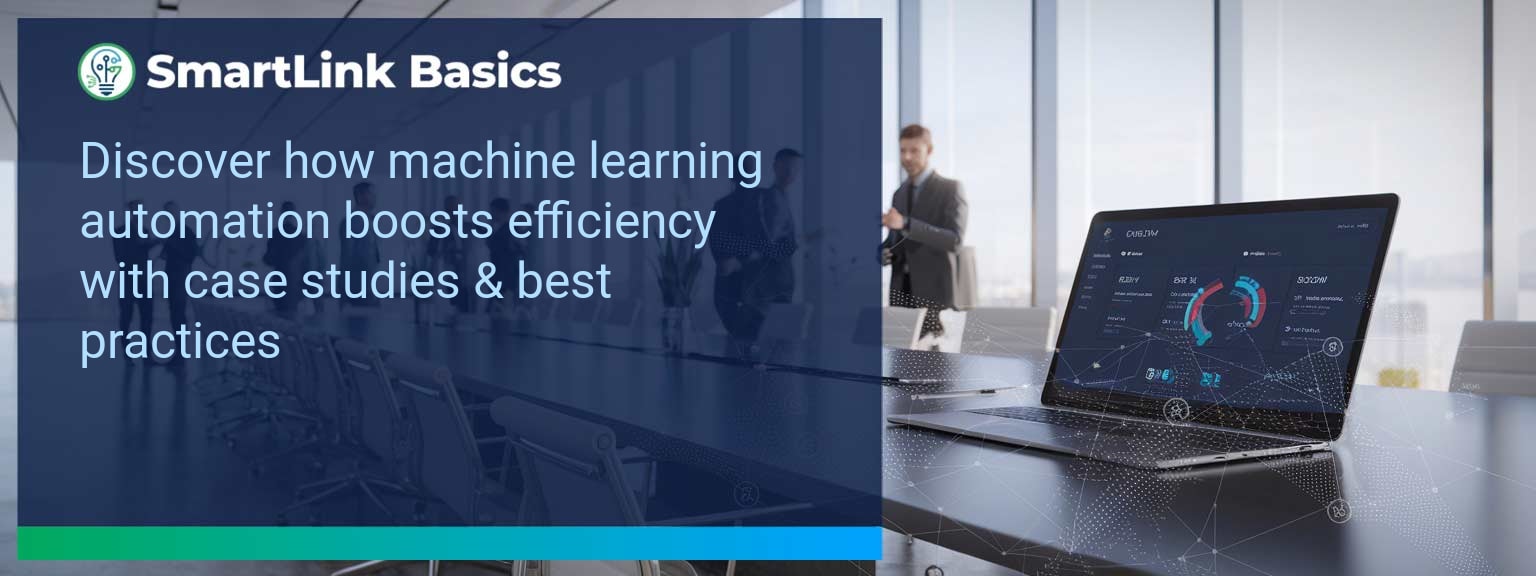Global enterprises adopting AI-driven task automation have reported up to a 45% reduction in operational cycle times, according to McKinsey. At SmartLink Basics, we see machine learning automation as a critical driver of agility, especially for sales leaders aiming to unlock measurable growth. This isn’t about replacing people—it’s about re-engineering processes to compound efficiency gains. In this article, we’ll break down the core challenges businesses face, share sector-specific case studies, and outline the best practices for deploying AI integration to achieve sustained process optimization. By the end, you’ll know how to identify inefficiencies, deploy targeted automation solutions, and track the right metrics to ensure your machine learning initiatives deliver revenue-impacting results.
- Identify current workflow bottlenecks through data-driven audits.
- Apply machine learning automation to repetitive, high-volume tasks.
- Ensure AI integration aligns with strategic business outcomes.
- Measure efficiency gains using leading, lagging, and quality metrics.
- Adapt to emerging AI trends to maintain a competitive edge.
Identifying Inefficiencies In Current Processes
Many organizations operate with layers of manual steps that have accumulated over years of incremental change. These inefficiencies limit scalability, slow decision-making, and erode margins. Machine learning automation uncovers hidden delays by analyzing task-level data such as response times, error rates, and process handoffs. In a financial services case, a sales support team reduced lead qualification time from four hours to under thirty minutes by identifying duplicate data entry and manual CRM updates. The key is to focus automation where the business impact is measurable and immediate. Audit your processes quarterly, using both system logs and employee input, to define automation priorities.Implementing Automation Through Machine Learning
Deploying automation isn’t a single event—it’s a structured transformation. Machine learning automation can classify, predict, and recommend actions across tasks ranging from lead scoring to contract review. The implementation phase should follow a staged approach: pilot on one process, validate outcomes, and scale with governance in place. For example, an industrial supply company implemented predictive analytics for inventory restocking, cutting carrying costs by 18% in six months. Integration with existing workflows minimized resistance from teams. Always pair AI integration with clear user training and defined escalation paths to maintain operational control.Measurable Gains In Operational Efficiency
The effectiveness of machine learning automation must be quantified. Leading metrics such as adoption rate and system utilization show immediate traction. Lagging metrics like cycle time reduction and revenue growth validate the strategic impact. Quality metrics reveal the human experience—crucial for long-term adoption. A retail chain introduced AI-powered demand forecasting, which increased forecast accuracy from 72% to 91%, enabling more precise inventory allocation. This not only reduced stockouts but also decreased discounting costs. Tie every automation initiative to specific targets within the revenue operating framework for continuous alignment.| Category | Metric | Definition | Target |
|---|---|---|---|
| Leading | Automation Adoption Rate | % of targeted tasks transitioned to AI-enabled processes | 85%+ |
| Leading | System Utilization | % of team members actively using automation tools weekly | 90%+ |
| Lagging | Cycle Time Reduction | % decrease in time to complete automated processes | 30%+ |
| Lagging | Revenue Growth | Increase in sales attributable to process optimization | +10% YoY |
| Quality | User Satisfaction | Average rating of team experience with automation tools | ≥ 4.0/5 |
| Quality | Process Accuracy | Reduction in manual errors after automation implementation | 40%+ |
Emerging Trends And Opportunities Ahead
The next wave of machine learning automation will focus on hyper-personalized workflows, where AI adapts processes dynamically based on contextual data. Cross-industry applications, such as combining workflow automation with real-time predictive analytics, will allow businesses to address customer needs instantly. Healthcare, logistics, and enterprise sales are already seeing AI integration drive gains in responsiveness and cost control. Staying informed through expert insights from SmartLink Basics ensures leaders can act ahead of competitors. Regularly reassess your automation roadmap to align with technological advances and shifting market conditions. <Get the 90-day plan, coaching rubric, and dashboard template to operationalize AI in your enablement program.









